Loophole-free Bell test – 2015
In 1935, Einstein asked a profound question about our understanding of Nature: are objects only influenced by their nearby environment? Or could, as predicted by quantum theory, looking at one object sometimes instantaneously affect another far-away object? We tried to answer that question, by performing a loophole-free Bell test.
Loophole-free Bell test - 2015

Press Release and News Items
- Press release of the TU Delft: English, Nederlands
- Nature News and Views
- Nature Video: a video explaining quantum ‘spookiness’
- New York Times article
- The Economist article
- The Times article
- TIME article
- The Daily Mail article
- Reuters article
- Zeit (German article)
- Frankfurter Allgemeine (German article)
- Andrew White on ABC News (Australian television)
- Pro-Physik (German article)
- De Volkskrant (Dutch article, a comic, and the story of ‘the bench’)
- Trouw (Dutch article, and a perspective on the quantum internet)
- NRC (Dutch article)
- New Scientist (Dutch article)
- RTL nieuws (Dutch article, television, around 15 minutes in)
- De Kennis van Nu (Dutch television)
- BNR nieuwsradio (Dutch radio)
- Met het oog op morgen, Radio 1 (Dutch radio, 26 minutes in)
Scientific article
Loophole-free Bell inequality violation using electron spins separated by 1.3 kilometres
B. Hensen, H. Bernien, A.E. Dréau, A. Reiserer, N. Kalb, M.S. Blok, J. Ruitenberg, R.F.L. Vermeulen, R.N. Schouten, C. Abellán, W. Amaya, V. Pruneri, M. W. Mitchell, M. Markham, D.J. Twitchen, D. Elkouss, S. Wehner, T.H. Taminiau, R. Hanson
Nature, published online October 21, 2015.
DOI: 10.1038/nature.15759
link to online article
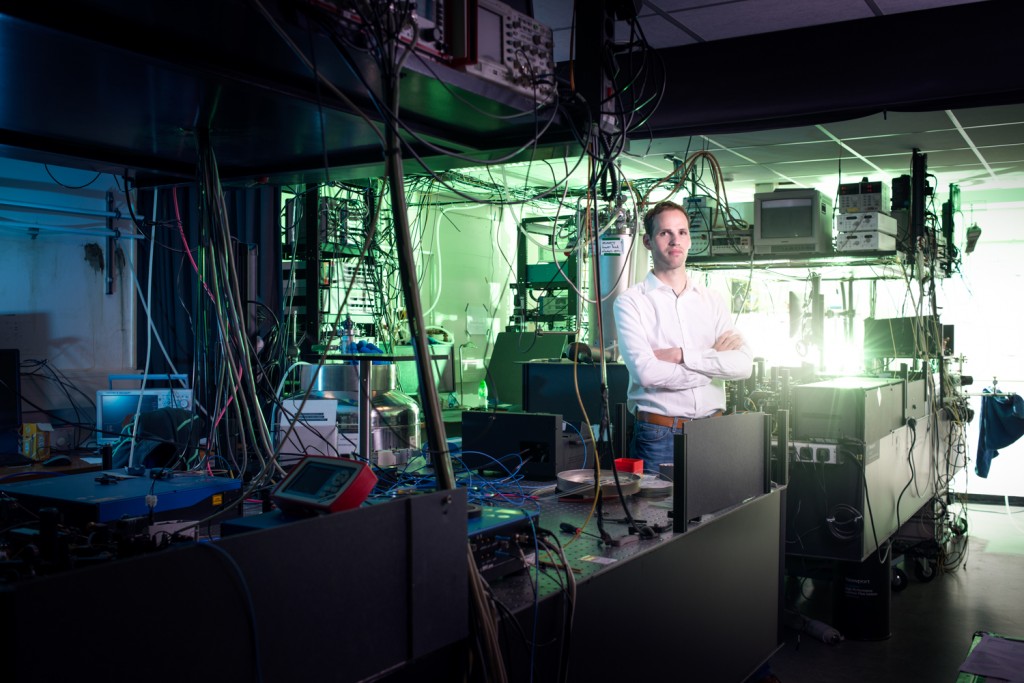
Prof. Dr. Ir. Ronald Hanson in his lab at location A of the Bell test. Photo: QuTech
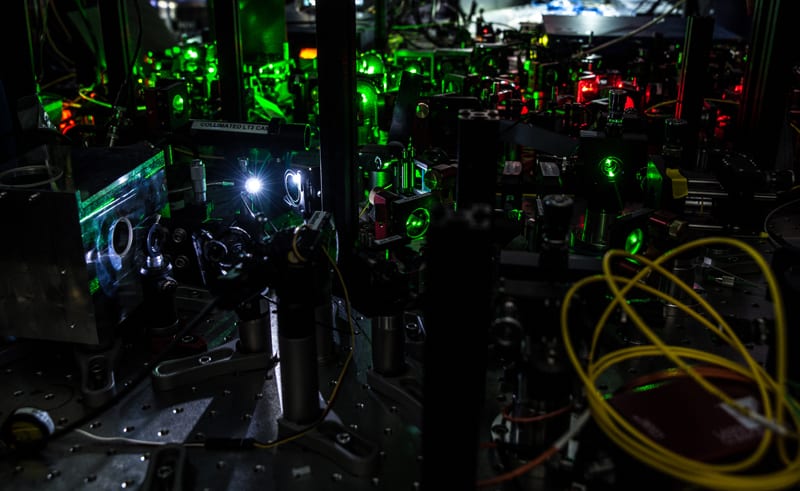
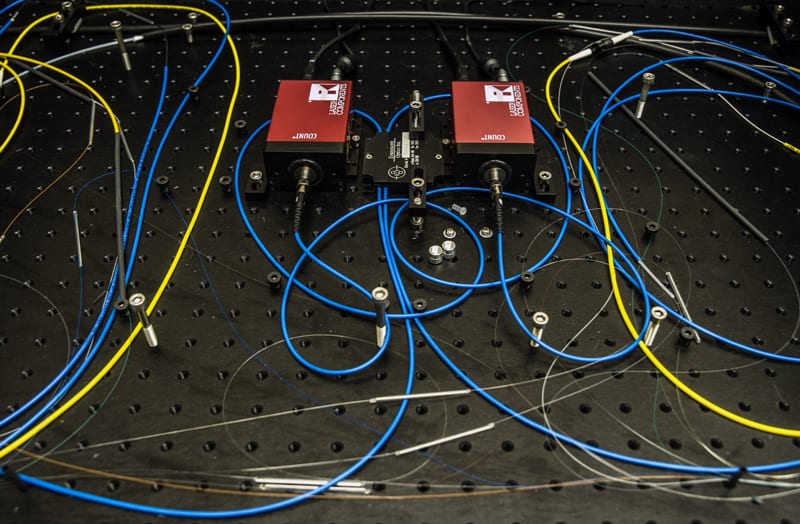
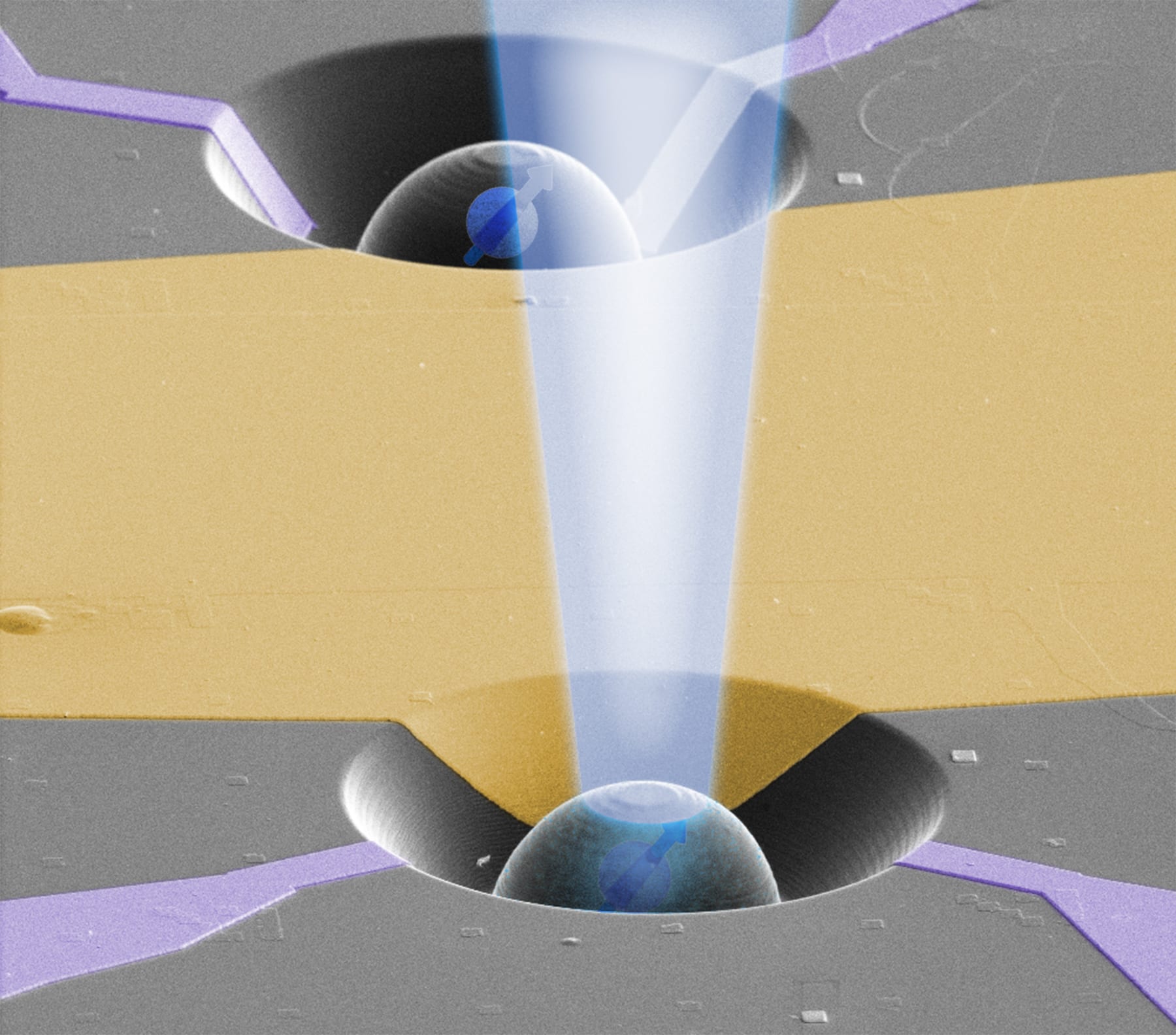
This image is an electron microscope picture of one of the two devices, with a fictitious laserbeam added. The image is about 40 micrometer wide in reality. Image: HansonLab@TUDelft
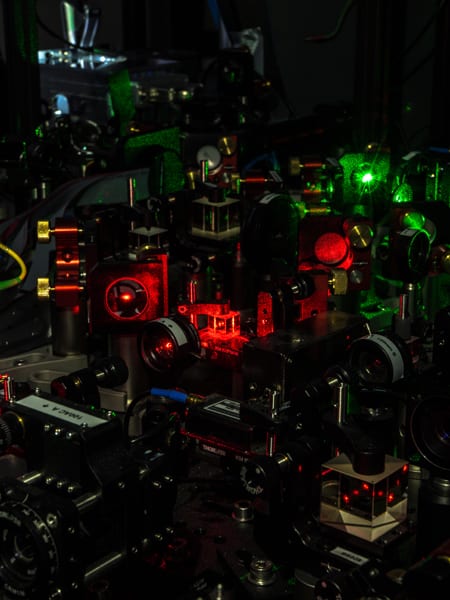
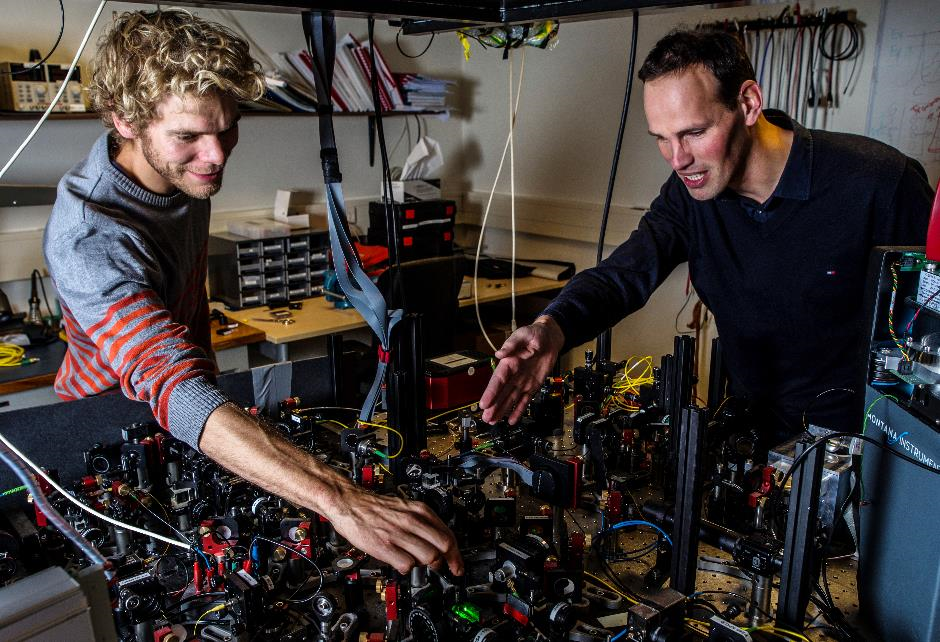
First author Ir. Bas Hensen and Prof. Dr. Ir. Ronald Hanson adjusting the Bell test setup at location A. Photo: Frank Auperle.

Aerial view of the campus, with location of the labs highlighted. On the far left is location A, housing one of the two diamonds. The other diamond is housed on the other end of the campus, on the right of the photo. The beam-spliter, at location C, is located in the middle. Aerial photograph: Slagboom en Peeters Luchtfotografie BV.
Videos
In this animation, a short overview of the concepts and history of the Bell test is given, and how our experimental result fits in the story.
This animation explains how the Bell test works.